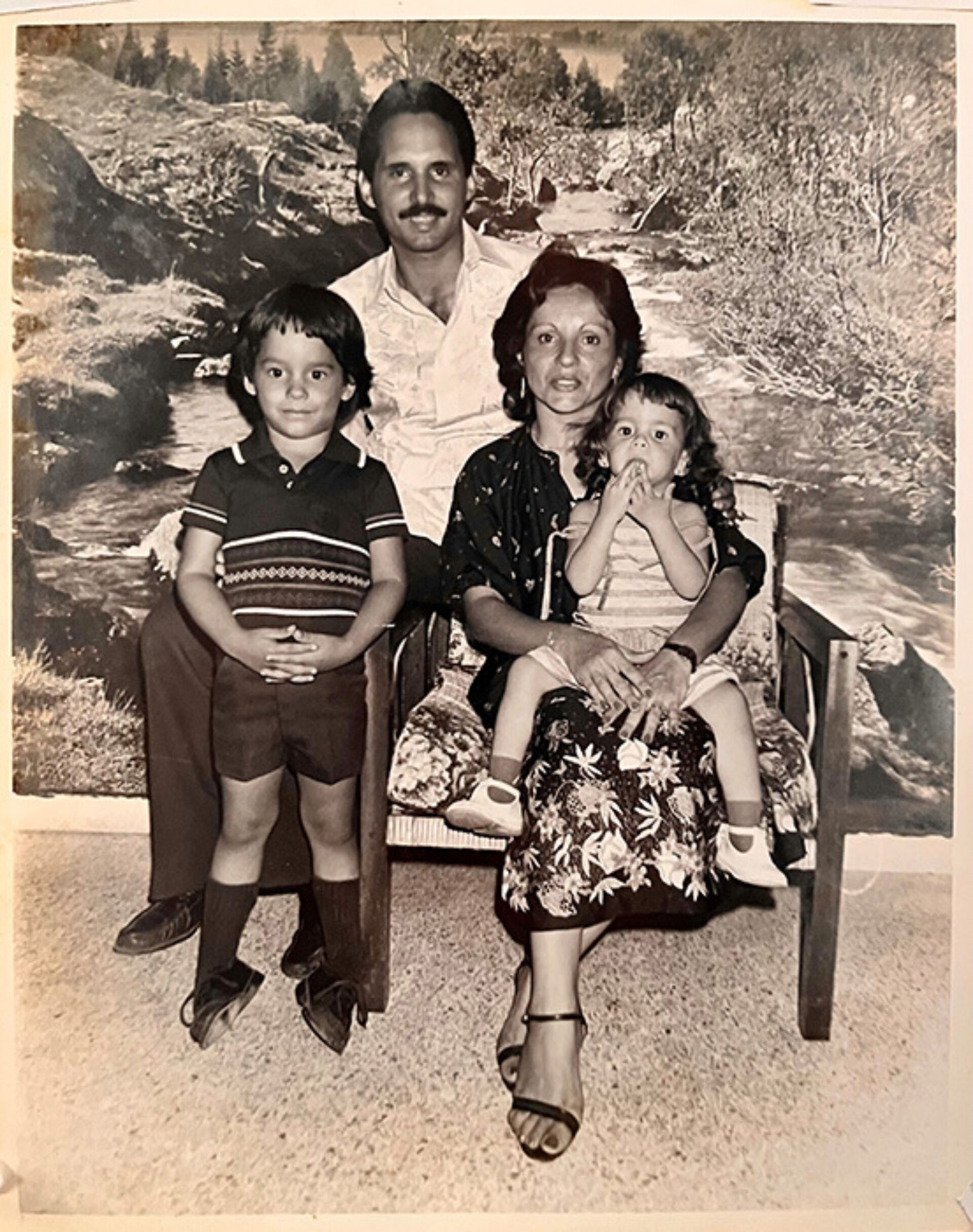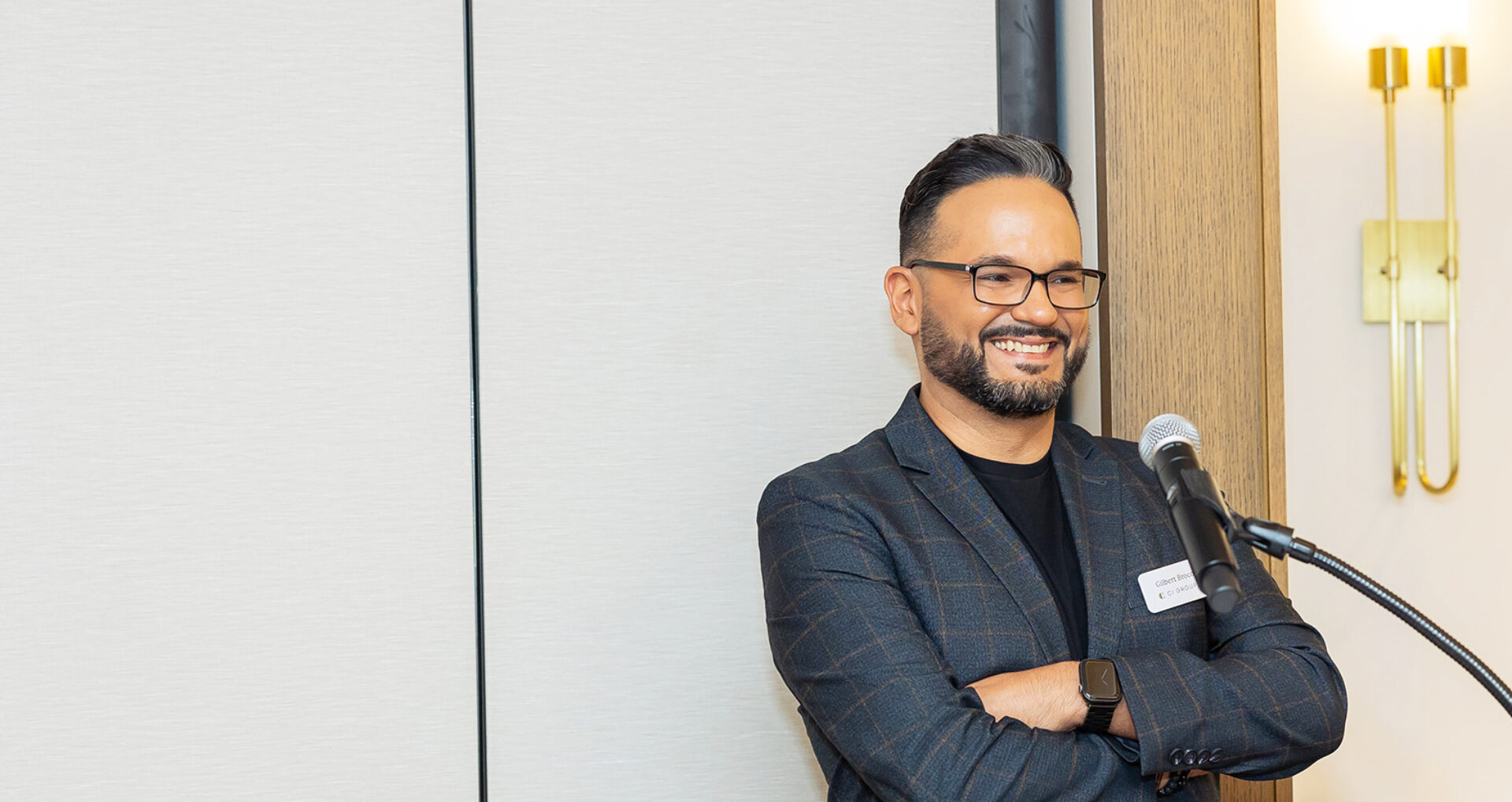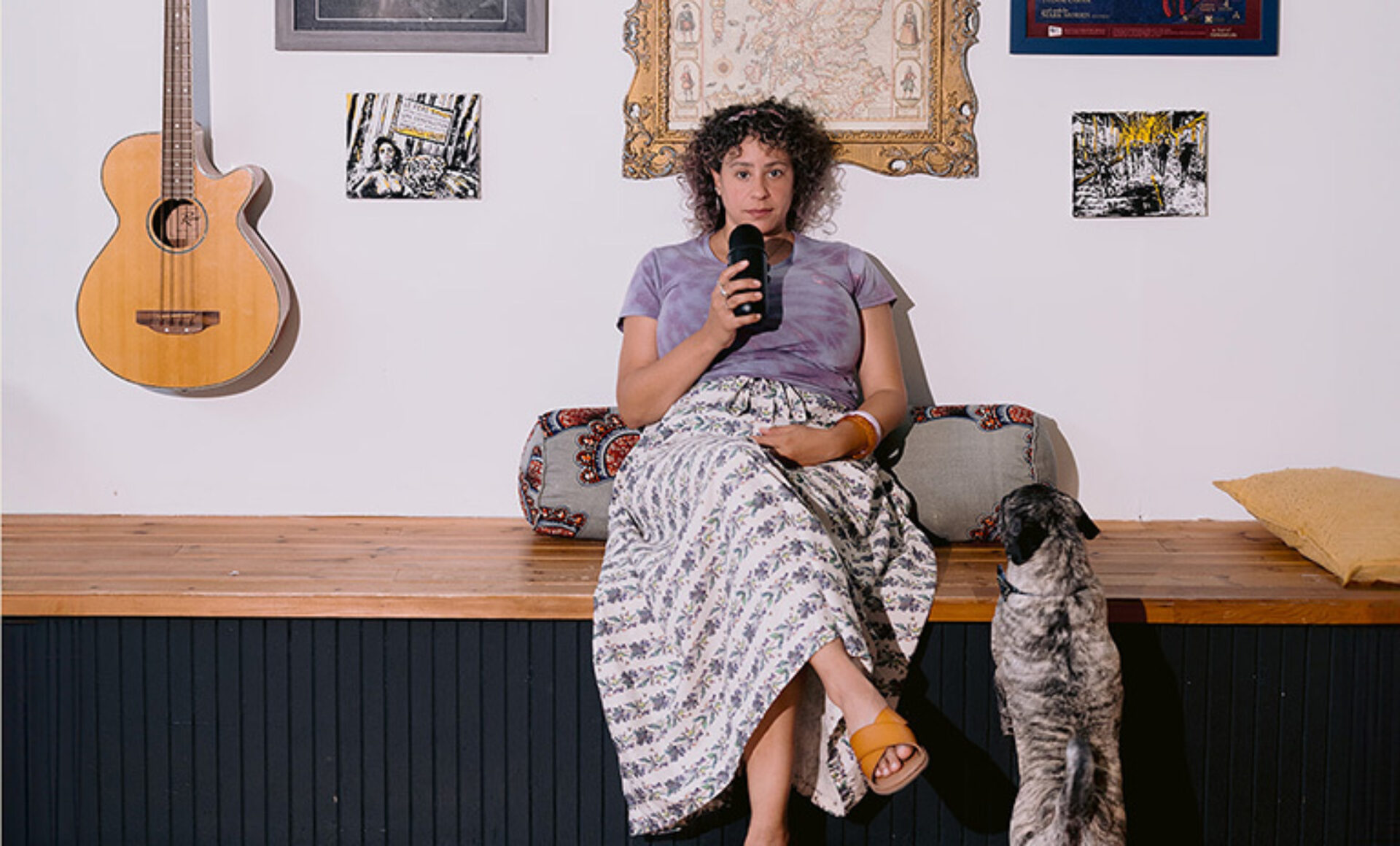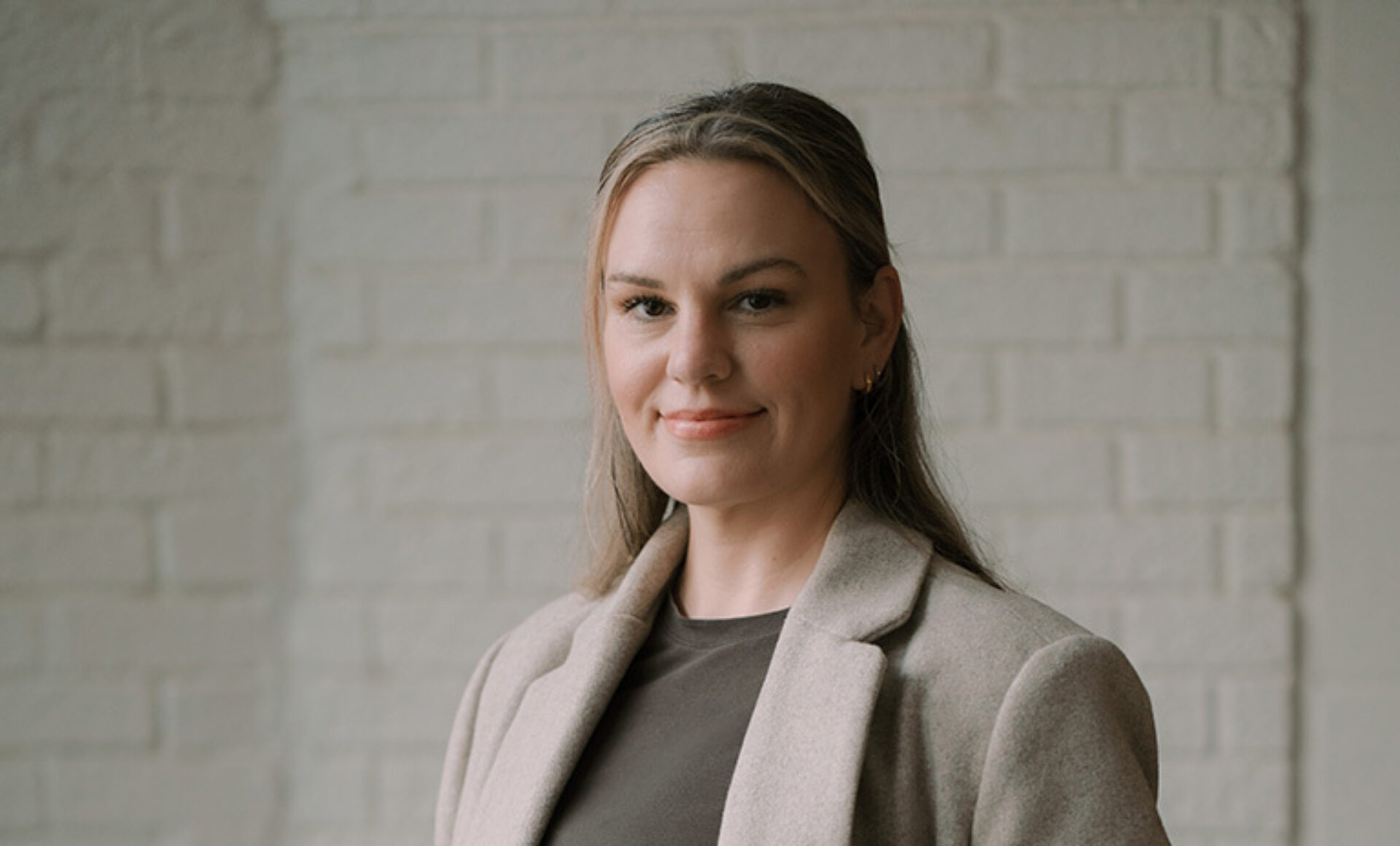This story is the first in our 2024 Hispanic Heritage Month profile series
As a six-year-old, Gilbert Broco could be found poring over the construction section in El Nuevo Día every Saturday—carefully cutting out the renderings and floor plans published in Puerto Rico’s main newspaper. Their destination? A notebook where he pasted the clippings, using sketches and notes to show how he thought the designs could be improved. “From a very young age, I knew my future would be intertwined with design,” he says.
From his childhood in Toa Baja, Puerto Rico, to a career in present-day Tampa, IIDA member Gilbert Broco’s life and career have been defined by creativity, leadership, and service work. He moved to Florida in 2006, eventually joining CI Group as a designer and ascending to the role of president and business partner in 2023. Broco has been involved in IIDA since early in his career, currently serving as the 2023-2024 IIDA Foundation Chair, and previously served as president of the Florida Central Chapter, and on the board of the IIDA North Florida Chapter.
We asked Broco to tell us about his background, career, and how his culture and heritage have influenced who he is—and how he designs—today.
Responses have been edited for length and clarity.
Tell us about how you discovered your love for design, and how you got to where you are today?
Growing up, I found solace in the arts. Despite being an introvert, creativity allowed me to express myself freely. My parents were incredibly supportive, always encouraging my sister and me to excel in whatever path we chose to pursue.
At 16, I was accepted into the School of Architecture at the University of Puerto Rico. This institution only admitted 30 students annually, and it was a privilege to study in such an environment. My degree in environmental design equipped me with the skills and inspiration to create spaces that harmonize with their surroundings. Initially, I began my career working under architects but soon found myself drawn to interior design—transforming blank canvases into soulful, functional, and livable spaces.
In 2006, my husband and I moved from Puerto Rico to Jacksonville, Florida, seeking new opportunities for growth. I began working at a contract furniture dealership, focusing on design for government projects. This was a stark contrast to my previous work, marked by significant cultural differences that took time to understand, from interactions between coworkers, to how design was approached. I transitioned from working on naturally lit, environmentally integrated spaces to more enclosed, formal work and functional environments. But the experience was invaluable, broadening my understanding of design across diverse environments.
Although I once envisioned a future as an architect, life had other plans, guiding me through a fulfilling career in interior design, contract furniture, and workplace consulting. Each step of this journey has reaffirmed my belief in the power of design to transform not just spaces, but the lives of those who inhabit them.

How has your heritage or cultural background shaped who you are?
Growing up as a Hispanic gay kid in Puerto Rico during the ’80s and ’90s was a complex experience, deeply influenced by the island’s rich, diverse history. Puerto Rican culture is a unique blend of Spanish colonizers, enslaved Africans, and Taino Native Indians, all of whom have left an indelible mark on our identity. With Puerto Rico being a commonwealth of the United States for over a century, American culture is also woven into our heritage. Despite its small size, Puerto Rico is a powerhouse of talent, with its vibrant, multicultural heritage set against the backdrop of breathtaking natural beauty.“
This environment has been a fertile ground for poets, artists, singers, writers, designers, and other creative minds alike. Our culture is deeply family-oriented—bonds extend beyond immediate family to include neighbors and close friends, all considered part of our extended family. We call our neighbors “tíos” (uncles) and “tías” (aunts), and their children become our cousins. This sense of community, along with our love for music, dancing, and finding joy even in the face of adversity, is deeply ingrained in me. It influences how I think, how I approach life, how I lead, and how I design. To me, design is about how we, as humans, connect with our environment, while providing comfort and protection for our loved ones.
My Hispanic accent is not a flaw but a badge of honor. It signifies that I speak more than one language, have lived a unique life, and bring a rich cultural perspective to the table.
Gilbert Broco
How has it shaped your approach design or leadership?
Human connection, community, transforming difficult situations to opportunities, and joy—these are the basic principles I use as a designer and leader. When approaching a design project, my first priority is understanding the people who will use the space, the building itself, its surrounding environment, and the broader community. My design philosophy involves integrating technical, functional, environmental, and personal insights. By combining these, along with my deep appreciation for human connections and the need for emotional, inclusive spaces, I breathe life into every project, creating places that resonate with those who inhabit them. Most of this comes from my cultural upbringing.
As a leader, I am committed to empowering others to reach their fullest potential by cultivating an environment where new ideas are welcomed and innovation thrives. I believe in a human-centered approach to leadership—recognizing that each team member brings a unique perspective to the table. Together, we take care of one another, holding each other accountable while ensuring everyone’s contributions are recognized, “como una familia.”
Success, to me, is a shared journey. We celebrate our victories together and, just as importantly, we embrace our setbacks as opportunities for growth and learning. Each challenge is a stepping stone, as essential to our progress as our successes, helping us evolve as individuals and as one team.
You’ve held a number of leadership and service roles within IIDA and in your local community, why is this work important to you?
Stepping up to leadership roles and leading by example is crucial, especially for young designers and individuals from underrepresented groups—whether they are Latino, Hispanic, LGBTQ+, or any minority that feels underrepresented in our industry. It’s vital that we bring our diverse perspectives and experiences into decision-making processes. These roles allow me to advocate for diversity, equity, and inclusion within the design community and beyond, showing others that there is a place for them at the table.
My father, who had a successful career in sales but found his true passion in community service, taught me the importance of servant leadership, instilling in me the belief that we have a responsibility to give back, to lead by example, and to care for others. We all have the power to create positive change and inspire others to be their best. When we bring together our broad, diverse perspectives, we can use our talents to solve current and future challenges together.
Through the design community, I’ve seen firsthand how diverse the United States truly is. This diversity is a tremendous opportunity to celebrate and embrace different backgrounds by incorporating our unique heritage into the environments we create. As a leader in the industry, I am committed to ensuring our field is always evolving, always inclusive, and always driven by the principles of thoughtful design.
What barriers have you faced in our industry, and what progress have you witnessed?
Throughout my career, at times I was made to feel inferior because of my Hispanic accent, cultural differences, and language barriers. Initially, these experiences felt like a personal failure. But over time, I realized it was not a reflection of my abilities, but rather a result of others’ ignorance. I decided to use these situations as opportunities to educate. I dedicated myself to working hard, being the best I could be, and aligning myself with businesses and partners who valued and embraced who I am. Respect is earned, but essential.
That’s not to say that discrimination and racism don’t still exist—they do, and it is everyone’s responsibility to step up and confront them. My Hispanic accent is not a flaw but a badge of honor. It signifies that I speak more than one language, have lived a unique life, and bring a rich cultural perspective to the table.

Progress is rarely a straight line. It may sometimes feel like we live in a divided and chaotic world, but there has been significant advancement in our industry and communities. We see more leaders who reflect our diverse backgrounds, who speak like us, and who can inspire everyone around them. Representation matters, it is key in creating a more inclusive and equitable future.


If someone asked you why it’s important to nurture younger minority students interested in design, what would you say?
Design is constantly evolving. It reflects changes in time, society, culture, and human needs. To keep innovating, it is crucial to have fresh ideas, new ways of thinking, and different perspectives on how we live.
Young people have a unique ability to see the world without the bias of repeated experiences. They see the future with clarity. Encouraging young, diverse students to pursue their passion for design gives them a chance to envision a future that represents our multicultural society. Their voices and visions are essential to driving the industry forward and ensuring that design continues to reflect the true diversity of our world.
We are all visitors on this planet, and the reality is that we are more interconnected than we often realize. Our diverse heritage and identities are not just personal attributes; they are powerful connections to our communities and to each other.
Gilbert Broco
Why is it important to celebrate our differences in this industry—cultural or otherwise?
We are all visitors on this planet, and the reality is that we are more interconnected than we often realize. Our diverse heritage and identities are not just personal attributes; they are powerful connections to our communities and to each other. These unique aspects of who we are shape our talents and contributions, allowing us to give back to the world in meaningful ways.
In the interior design industry, celebrating and recognizing our differences is essential to innovation and progress. Each individual brings a distinct perspective and cultural background that enriches our collective experience. By honoring these differences—whether they stem from cultural heritage, personal identity, or varied career paths—we create a more inclusive and dynamic community, leading to designs that truly reflect the diversity of the human experience.







